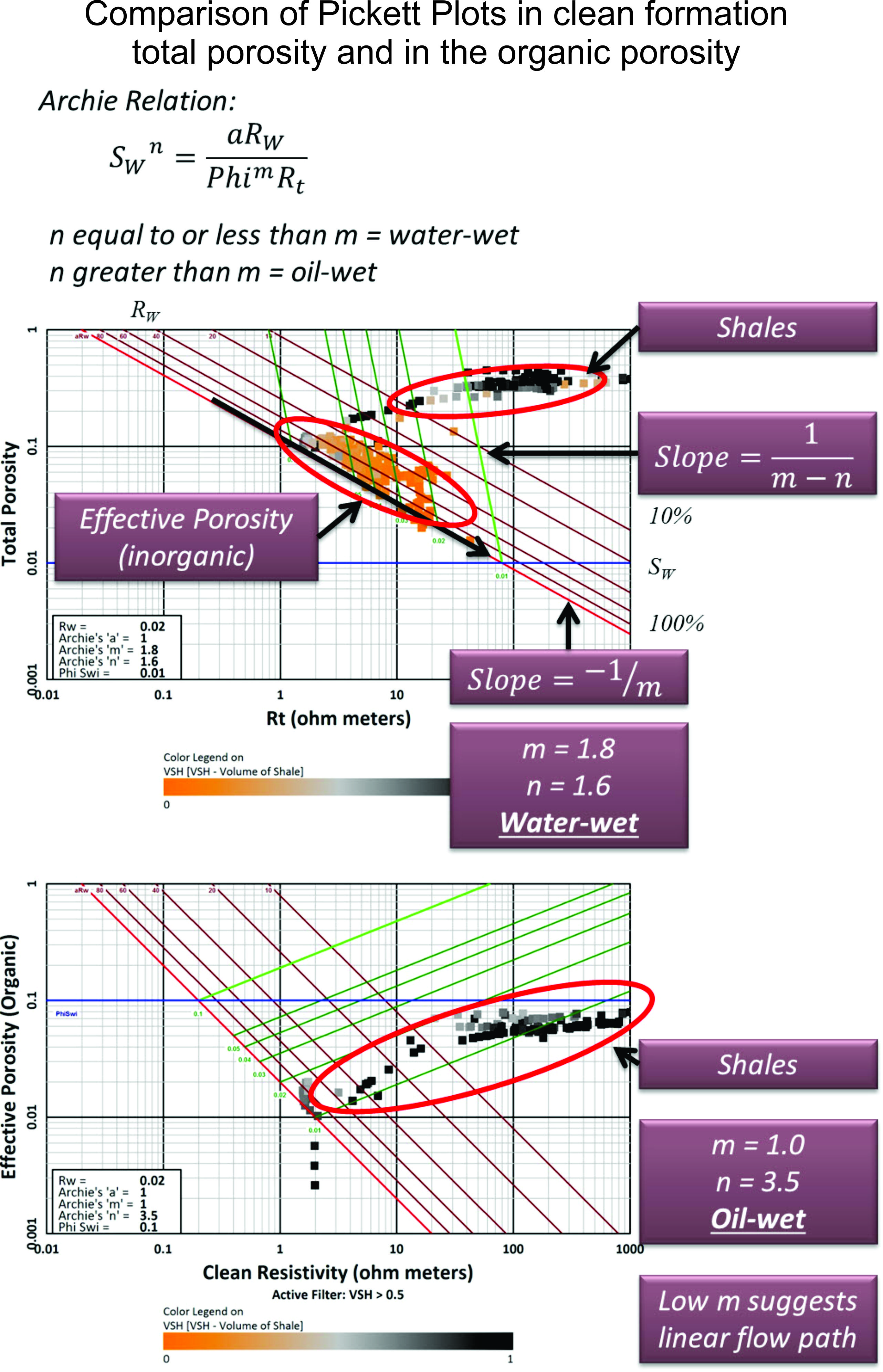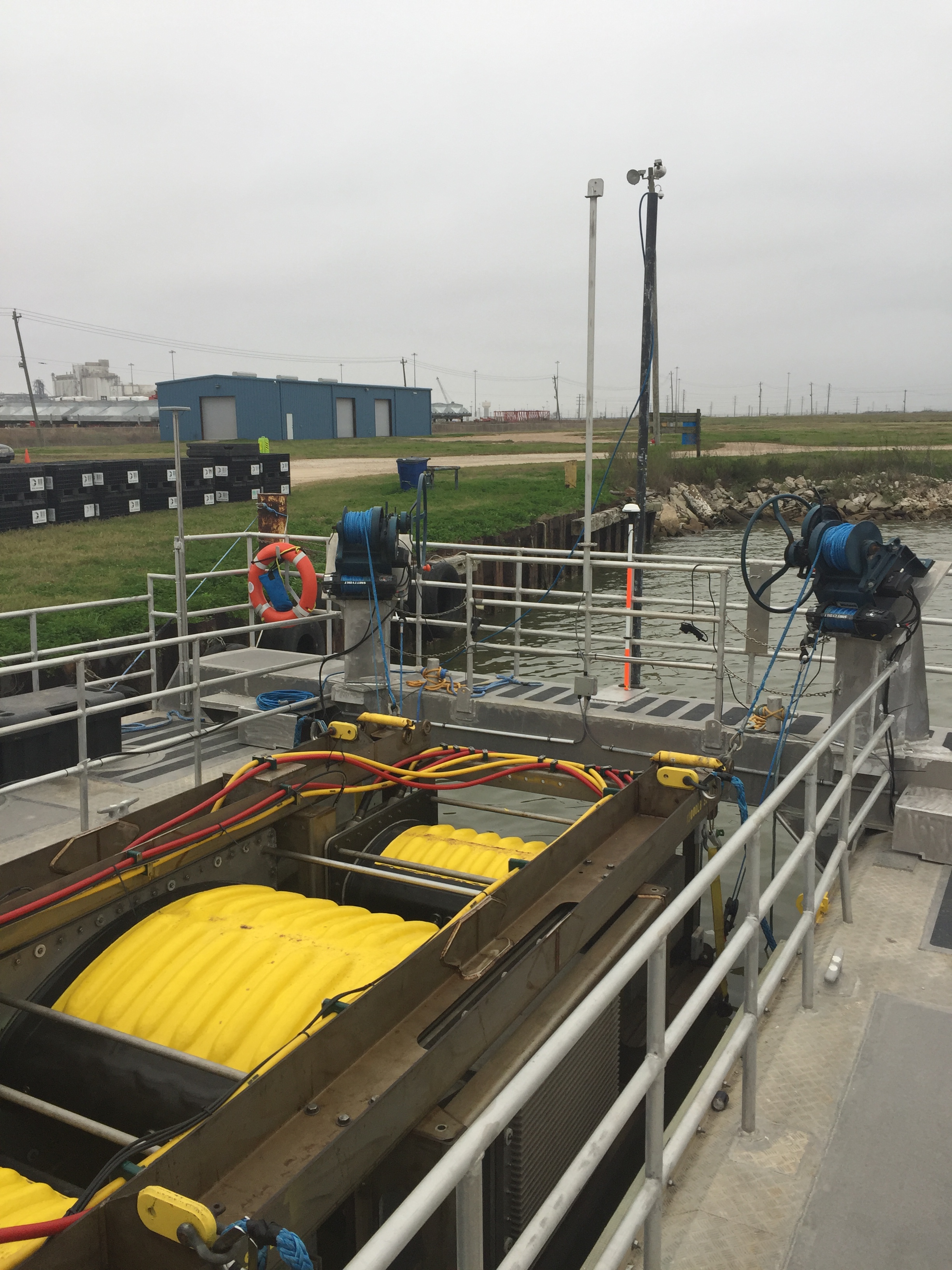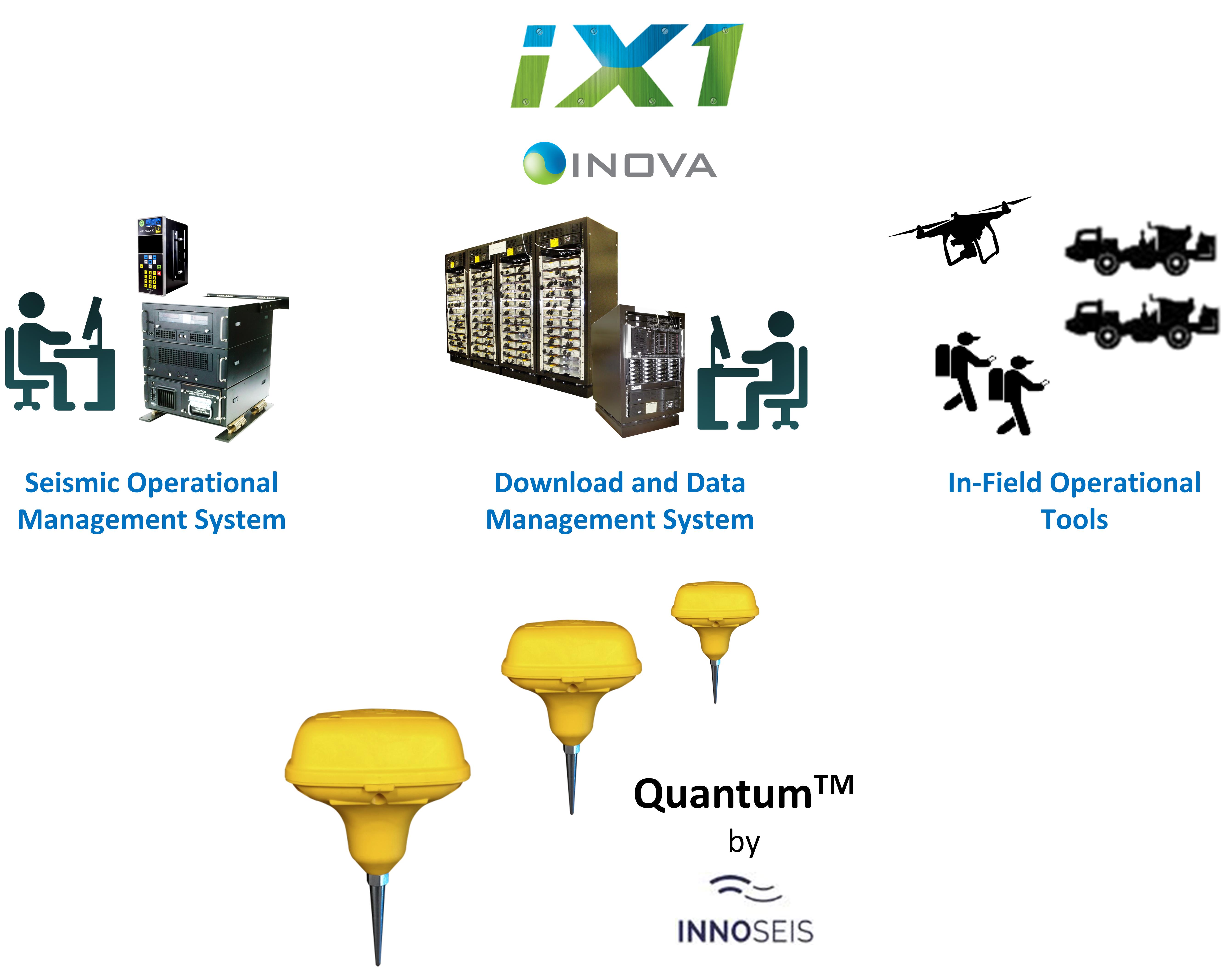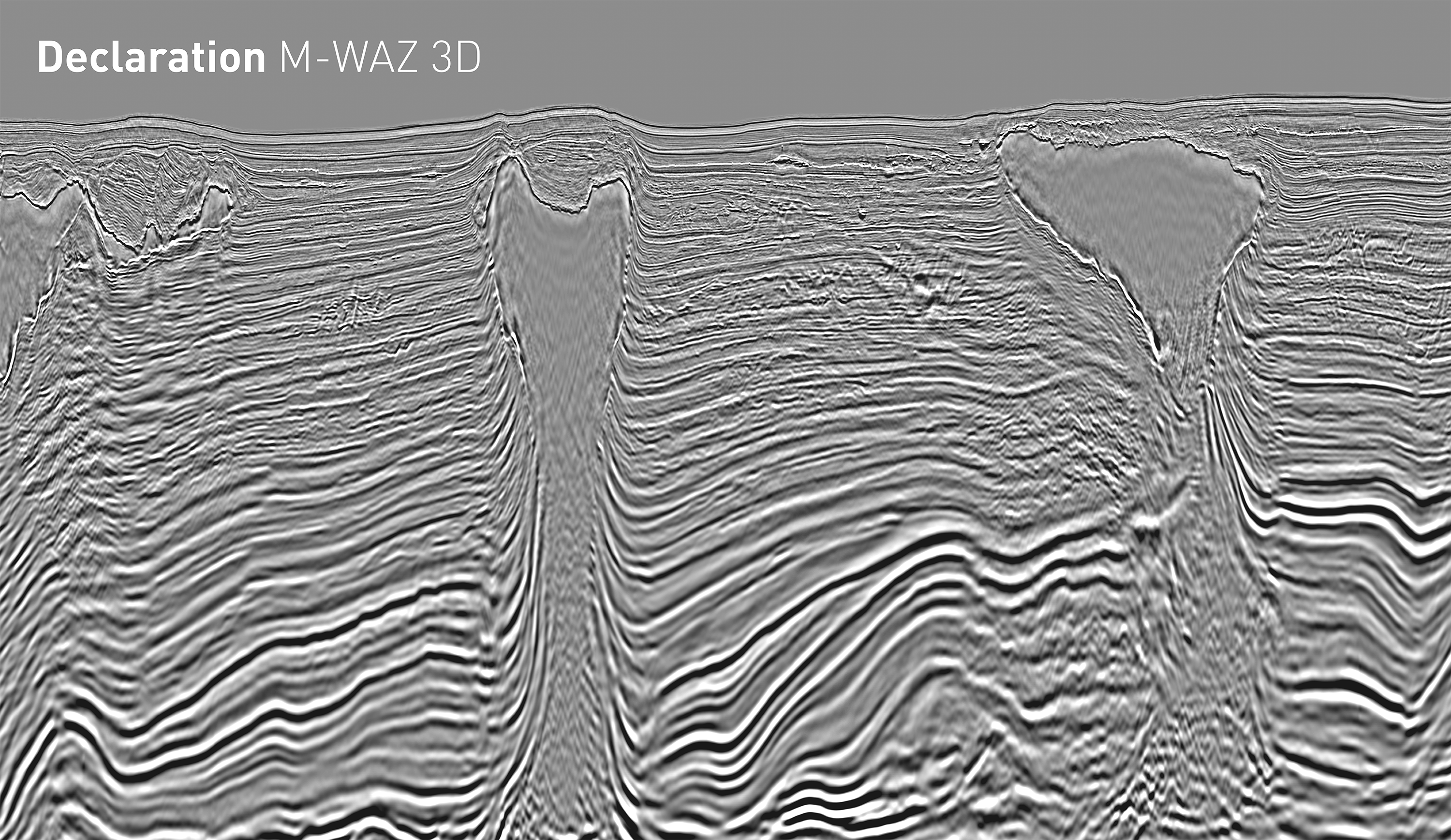
Machine learning-based rock-type classification uses seismic data and facies logs to predict facies volumes and their probability of occurrence to improve reservoir characterization. (Source: Paradigm)
The Society of Exploration Geophysicists (SEG) International Exposition and 87th Annual Meeting in Houston provides an avenue to showcase and share new technical insights and business developments across multiple disciplines of the geosciences sector. The following is a sampling of some of the new technologies and products that will be showcased at the conference this year.
Editor’s note: The copy herein is contributed from service companies and does not reflect the opinions of Hart Energy.
 Digital seismic system receives upgrade
Digital seismic system receives upgrade
Designer and manufacturer Avalon Sciences Ltd. (ASL) delivers borehole seismic technology with a specific focus on vertical seismic profiling and downhole microseismic equipment. At booth 2320 at the SEG conference ASL will be presenting the latest hardware, including an update on the new 3-component downhole fiber-optic system (BOSS) and the new X-Series modular upgrade to the Geochain system. The X-Series will deliver tool functionality enhancements to clients’ existing Geochain inventory, namely upgrading the downhole tool temperature rating to 196 C (385 F), along with improved telemetry performance and integrated high-side indicators to give real-time tool roll and inclination values within every satellite. Combined with the company’s new ultrahigh-pressure 35,000-psi Advanced Seismic Receiver, the new X-Geochain is designed to be one of the most robust wireline seismic tools for operation in the most hostile of well environments. avalonsciences.com
FWI, least-squares migration a focus at SEG
At SEG 2017 CGG will showcase some of its latest imaging technologies including reflection-based full-waveform inversion (RFWI) and least-squares migration (LSM). Both technologies have been applied to some of CGG’s most recent JumpStart integrated multiclient geoscience programs, including Encontrado in the Southern Gulf of Mexico. In complex areas FWI provides significant uplift in velocity model accuracy, particularly in the shallow sediment section. Recent advances using RFWI have delivered significant improvement in deeper sections below complex structures such as mobile shales or massive salt bodies. CGG also has made extensive advances in LSM technology, which can provide substantial improvements to both image quality and amplitude fidelity. For more information, see the six CGG papers on RFWI and LSM in the SEG 2017 technical program. cgg.com

RFWI enhances the imaging of the complex Perdido fold belt structures and underlying reservoirs in the Encontrado program. (Source: CGG Multi-Client & New Ventures)
Transforming end-user geoscience
As the oil and gas industry embraces increased digitalization across the hydrocarbon value chain, the geoscience community needs more computing power at its disposal to manage the exponential increase in captured seismic and operational data but without the burden of being forced to locate teams where the computing power traditionally is. Geoscience benefits greatly when workflows are executed in close proximity to the field, and this is accomplished using three end-user computing modes: 1) regional geoscience, where teams share computing resources through high-visualization virtual desktop infrastructure; 2) remote operations, where offshore and environmentally challenged locations require computing through self-contained appliances; and 3) enhanced immersive geoscience, where virtual and augmented reality technologies increase the level of data interaction, understanding and geoscience collaboration in a practical, material way. Dell EMC is demonstrating end-user geoscience transformation at SEG 2017 booth 1101 using its Petrotechnical IT Solution Suite. dellemc.com

 Triple-combo log suite categorizes porosity components
Triple-combo log suite categorizes porosity components
It is commonly recognized that unconventional reservoir systems have mixed wetting—both a water-wet fraction and an oil-wet fraction. Analysis of rock samples has been used for many years to measure reservoir wetting (Kumar et al. 2015). However, there are no available petrophysical techniques for wetting categorization using readily available logging suites. In 2016 (AAPG, Las Vegas) using triple-combo logs Digital Formation presented data from a number of unconventional reservoirs categorizing the porosity component that is water-wet and recognizing another component that is oil-wet. The oil-wet component is organic porosity generated from the total organic carbon during the thermal maturation process. This organic porosity has not been previously calculated in standard petrophysical analysis. The approach has very significant applications to the study of flow characteristics of unconventional reservoirs. The amounts of porosity that are oil-wet and water-wet can be quantified level by level. Each component will have markedly different flow characteristics to derive a combined response for the total system. digitalformation.com
Visualize, manipulate and interpret data within single software platform
How are you figuring out which zones your competitors’ wells are landing in and producing from? How are you measuring well interference? Are you using geoscience and engineering data to predict and optimize future results? Imagine a tool that could use deviation surveys and gridded geologic surfaces to precisely locate horizontal wellbores and calculate geometric attributes for each, such as distance to nearest fault, percent in zone and more in minutes. Or imagine a tool that allowed quick but sophisticated identification and quantification of interfering well pairs or perhaps a tool that was customdesigned to integrate geology, geophysics and engineering data in a rigorous multivariate analytics workflow to predict the best “recipe” for wells in a specific area. With DI Transform these tools are a reality. With 3-D visualization and functionality to solve today’s challenges DI Transform is designed to help companies throughout the oil patch deliver better answers and results. info.drillinginfo.com

DI Transform’s geoscience and engineering tools help users meet today’s resource play development challenges. (Source: Drillinginfo)
System improves depth penetration and resolution
EMGS has completed the development of the next-generation electromagnetic (EM) source system. Deep Blue was developed within a joint industry project (JIP) with Shell and Statoil with the goal of significantly improving the depth penetration and resolution compared to existing EM systems. The new deep-towed source can operate in water depths up to 4,000 m (13,123 ft), and the depth of penetration will increase up to 1.5 km (.93 mile) in most geological settings. Deep Blue not only impacts deep exploration targets but also near-field exploration and field appraisals, where resolution and sensitivity requirements are higher. Following a successful technology trial offshore Norway, which confirmed improvements in data quality and prospect imaging, the JIP partners entered a commercialization agreement. The first commercial survey using the next-generation EM source system was recently completed in an area offshore Norway. emgs.com

The EMGS Deep Blue source (left) is shown being deployed for its first commercial survey offshore Norway. The EMGS conventional source is shown on the right. (Source: EMGS)
Import data, co-visualize information
Canopy Geoscience is a software platform for building geoscience applications using Python. The platform provides tools to import geoscience data and co-visualize information spanning multiple disciplines such as geophysics, petrophysics and reservoir engineering. This eliminates the limitations of domain-specific solutions and accelerates the delivery of innovative data analysis workflows to oil and gas companies. The Python scientific software ecosystem provides a wide range of tools to rapidly take research ideas from the whiteboard to deployed applications. Leverage existing geoscience toolkits including seismic processing, geostatistics and reservoir simulation. Incorporate the latest artificial intelligence techniques and machine learning models using scikit-image, TensorFlow, Keras and more. Users can give their existing Python scripts a custom user interface and deploy easy-to-use applications to their team. Canopy Geoscience is extensible, and plugins can be written to extend the capabilities of the application. Enthought builds custom software for oil and gas companies that are deployed on Canopy Geoscience. enthought.com

Canopy Geoscience integrates data input/output and visualization in a Python environment for building innovative geoscience applications. (Source: Enthought)
 Flexibility, scalability and safety in OBN acquisition
Flexibility, scalability and safety in OBN acquisition
FairfieldNodal has extended its ZNodal Technology portfolio to include ZXPLR, an ocean-bottom node (OBN) capable of dual-mode deployment. New efficiencies in deployment and node handling will create more cost-effective opportunities to acquire the long-offset, full-azimuth and densely sampled data characteristic of OBN acquisition. In a deepwater configuration ZXPLR is designed to significantly improve node deployment, recovery and HSE exposure by increasing high-speed loader (HSL) payloads, employing mid-water docking and active heave controls on HSL and ROV systems. In shallow-water configuration ZXPLR features automated retrieval and deployment with safe and efficient handsfree rope connection and disconnection. Overall survey and back deck management systems have been improved, and onboard data quality control has been largely automated, enabling onboard processors to quickly and consistently verify node data. fairfieldnodal.com
 Marine vibrator generates seismic energy equivalent to airguns
Marine vibrator generates seismic energy equivalent to airguns
The environmental impact of subsea noise can be significant— high-amplitude impulsive sources can mask animal calls and may cause temporary hearing loss or changes in animal behavior. The Geokinetics AquaVib marine vibrator is a towable marine source that generates seismic energy equivalent to airguns at significantly reduced sound pressure levels and at frequencies below the hearing range of most marine species. The AquaVib subarray consists of two Triton vibrators and one lower frequency Subton, each with different response characteristics and resonant frequencies. Advanced controller systems enable precision acoustic output while providing real-time feedback to ensure high levels of acoustic quality control. AquaVib is designed for water depths as little as 1 m (3.28 ft), delivering performance and reliability in challenging transition zones, lakes and shallow-water OBN surveys. geokinetics.com
Technology results to be featured at conference
Geophysical Insights will be showcasing the application of two important results that are the product of applying Paradise machine learning technology on multiple seismic attributes simultaneously at single sample resolution: discrimination direct hydrocarbon indicators (DHIs) and identifying thinbeds below classic seismic tuning at SEG 2017. DHIs are seismic anomalies due to the presence of hydrocarbons and caused by changes in rock physic properties. The accurate interpretation of DHI characteristics has proven to significantly improve the success rates of drilling commercial wells. Paradise incorporates attribute generation and multi-attribute analysis using self-organizing maps. Likewise, the identification of features below classic seismic tuning (thinbeds) is enabled by multi-attribute analysis and is not restricted to resolution limits of conventional amplitude data. Both of these capabilities have profound consequences on interpretation, which will be addressed in presentations at the company’s booth 301 and are described in recent papers. geoinsights.com

Self-organizing maps enable interpreters to clearly identify thinbeds and edge effects associated with DHI characteristics such as hydrocarbons contacts, transition from hydrocarbon to brine portions of the reservoir and even more accurate hydrocarbon volumetric calculations. (Source: Geophysical Insights)
Producing multiple possible geological realizations
Ikon Science will be releasing a new stochastic version of RokDoc Ji-Fi technology. The flagship joint impedance and facies inversion technology (Ji-Fi), which requires no low-frequency background model, generates multiple equi-probable realizations of facies and elastic properties from seismic and geological input data. This new release delivers a host of statistical analysis features to assess rock and hydrocarbon volumes along with facies and rock property uncertainty. RokDoc Ji-Fi brings 21st century seismic data analysis to subsurface teams working in exploration, near-field, development and production drilling. Other enhancements to RokDoc Ji-Fi this fall include spatially varying wavelet and noise fields and a new, more intuitive and user-friendly interface. Furthermore, the 2017 software supports high-performance computing solutions on both large-scale cluster and cloud computing environments. ikonscience.com

Stochastic inversion allows uncertainty in reservoir properties to be taken into account, producing multiple possible geological realizations. (Source: Ikon Science)
 Collaboration leads to nodal acquisition system
Collaboration leads to nodal acquisition system
A collaboration between INOVA Geophysical and Innoseis has enabled development of a new, fully featured autonomous nodal acquisition system. The system leverages iX1 command and control software from INOVA and Tremornet from Innoseis to create a new system called Quantum. iX1 provides hardware and software functionality for all types of onshore seismic operations plus nodal data download and management and in-field operational tools. iX1 also provides integrated source control and is compatible with INOVA’s existing cable and cableless acquisition ground equipment facilitating a single system infrastructure for hybrid deployments. Quantum is the industry’s lightest and lowest power nodal sensor enabling fast, cost-effective seismic recording. These attributes make dense receiver deployment economically feasible resulting in a higher resolution seismic image. The Quantum system provides users with a new acquisition technology, supported worldwide by INOVA, that is designed to deliver lower costs, greater operational flexibility and improved image quality. inovageo.com
Accelerate development of web-based data visualization
INT offers the only digital framework—IVAAP—which unlocks significant value for E&P with a modern, cloudbased platform to help companies achieve the lowest TCO and highest operational performance. IVAAP’s modular and scalable microservices architecture accelerates the development of data visualization and analysis solutions so users can replace outdated legacy platforms quickly and easily. IVAAP aggregates and streams multiple data sources in real time, including WITSML, and the HTML5 client uses GeoToolkit libraries—the industry standard—to build powerful visualizations, including well logs, histograms, schematics, 2-D/3-D and more. With no installation needed, users can set up and analyze their data in minutes. Cloud-enabled and network-secure, IVAAP allows teams to collaborate remotely and helps companies optimize their E&P processes. int.com

IVAAP is a digital framework that accelerates the development of web-based data visualization and analysis solutions for upstream E&P users. (Source: INT)
New technique for thin layer interpretation, hydrocarbon detection
Lumina’s PhaseDecomp is a direct hydrocarbon and sweet spot indicator that offers a new technique for thin layer interpretation and hydrocarbon detection by making subtle amplitude effects highly visible. By separating the seismic trace amplitudes into unique phase components (akin to spectral decomposition’s frequency components), phase attributes that accentuate otherwise subtle amplitude anomalies are produced. Lateral changes in lithology, porosity and fluid content all affect amplitude and phase of the seismic data. Amplitude anomalies become more recognizable when interpreted on individual phase component volumes. Hydrocarbon effects are commonly separated on the -90 phase component, while water contacts could be more readily observed in the 180 phase component. With this improved seismic interpretation technique, hydrocarbon volumetrics and reserves calculation is more precise, and exploration risk is reduced. luminageo.us/v2

The left image is a stacked seismic section, and the right is the -90 phase component showing bright amplitudes at hydrocarbon accumulations. (Source: Lumina Geophysical)
 Real-time notification of seismicity
Real-time notification of seismicity
Nanometrics’ developments in processing and noise-suppression techniques fully utilize the power of broadband seismometers, which allow cost-effective passive fracture imaging, giving users fracturing diagnostics at a fraction of the price of costly and riskier downhole monitoring. The company operates the largest private arrays in the world by which operators can share installation costs while maintaining state and provincial regulatory compliance. Real-time risk management is best accomplished through dense monitoring arrays (private or shared), allowing operators to monitor themselves. Nanometrics will be at SEG at booth 1909. nanometrics.ca
 Improving asset team effectiveness
Improving asset team effectiveness
At SEG Paradigm will feature some of the advanced technologies in its Paradigm 17 release, designed to improve asset team effectiveness and results. These include incorporating machine learning into the interpretation platform for facies classification. Another workflow presented lets users realize the full value of chronostratigraphic modeling by combining chronostratigraphic interpretation and modeling without approximations. The company will present broadband deghosting in a high-resolution seismic processing, imaging and inversion workflow. Paradigm will also show the value of in situ full-azimuth imaging for different geologic regimes and demonstrate how to improve field decisions through precision depthing with travel time-preserving tomography. Advanced SKUA-GOCAD technologies will be presented, including stochastic refinement and inversion for better vertical resolution and probabilistic outcomes, the use of integrated reservoir modeling to improve horizontal well placement, and other new offerings. Finally, the company will show how Paradigm software running on the cloud provides an optimal solution to the demanding requirements of the oil and gas E&P industry. pdgm.com
Seismic vector array used to characterize, monitor subsurface
At SEG Paulsson Inc. will showcase a borehole vector-seismic all-optical array consisting of a small-diameter drillpipe- based deployment system that includes a hydraulic clamping mechanism for the sensor pods, an optical sensor pod design, a fiber-optic seismic vector sensor, distributed temperature sensors, distributed acoustic sensors and optical pressure sensors. In combination, these technologies allow the deployment of an ultralarge number of 3-component seismic sensor pods and distributed optical sensor arrays in vertical, deviated or horizontal wells. Laboratory and field tests of the fiber-optic seismic vector sensors have shown that the optical borehole seismic sensor technology can generate high vector fidelity data with extremely large bandwidth—0.01 Hz to 10,000 Hz. Benefits include a proven capability to record micro-seismic data at magnitudes much smaller than M-4.0 at frequencies more than 2,000 Hz at temperatures more than 300 C (572 F). paulsson.com

The Paulsson team deploys an all-optical vector seismic and distributed optical sensor array into a deviated borehole drilled into a Michigan reef to monitor a CO2 flood. (Source: Paulsson)
 Geoscience application software increases efficiency
Geoscience application software increases efficiency
SeisWare and Recon software is an integrated geophysical and geological interpretation package used by geophysicists and geologists. SeisWare International Inc. developed a patented technology called Cascade Technology. Any changes to interpretation immediately update within the company’s interactive windows while re-gridding all of the user’s structural surfaces on the fly. This is designed to greatly reduce the time it takes for geologists to do quality control and increases efficiency and accuracy of interpretation. seisware.com
Improving subsalt images in the GoM
New long-offset and dual wide-azimuth (WAZ) acquisitions combined with a geologically sound velocity modeling strategy provides unprecedented insights into the subsalt of the Mississippi Canyon region of the Gulf of Mexico (GoM). Salt structures can be complicated but, once they are built, can simplify the geologic model. Completely reworking some salt tectonic structures enhances the image, particularly in the Mesozoic section. It is critical that concepts are tested and proven successful for the resulting migrated image. Certain types of improvements stand out. Refinement of the shallow salt shape and especially of shallow overhangs uplifts the local subsalt image. Salt-stock geometries are addressed, and in some cases shapes are simplified. Salt wings and early Miocene canopy structures are reevaluated. The common hourglass shape of vertical stocks is simplified, widening the “waist,” vastly improving the base-salt image at the Louann level and permitting presalt imaging. tgs.com

Salt interpretation for velocity model building using long-offset multi-WAZ data improves the subsalt image in the eastern Mississippi Canyon in the GoM. (Source: TGS)
 Onshore seismic data acquisition enhanced
Onshore seismic data acquisition enhanced
Wireless Seismic has enhanced and expanded the industry’s only fully scalable wireless seismic recording systems with realtime data transmission. The RT2 system now features new hardware developed to significantly reduce the wireless recording unit power consumption, resulting in less capex and greater efficiencies. One fully charged standard six-cell battery now operates a wireless recording unit for 25-plus days. Wireless Seismic is also a collaboration partner with Total E&P Research & Development and Geokinetics for the next-generation land seismic acquisition and processing system Multiphysics Exploration Technology Integrated System (METIS). Wireless Seismic provides the real-time seismic recording infrastructure that supports the 150,000-plus real-time channels required by METIS deployments; the high-speed, real-time radio telemetry system based on its next-generation radio technology; and the seismic recording channel called Downfall Air Receiver Technology (DART) deployed from aerial drones. wirelessseismic.com
Recommended Reading
Aris CEO Brock Foresees Consolidation as Need for Water Management Grows
2025-02-14 - As E&Ps get more efficient and operators drill longer laterals, the sheer amount of produced water continues to grow. Aris Water Solutions CEO Amanda Brock says consolidation is likely to handle the needed infrastructure expansions.
Halliburton, Sekal Partner on World’s First Automated On-Bottom Drilling System
2025-02-26 - Halliburton Co. and Sekal AS delivered the well for Equinor on the Norwegian Continental Shelf.
E&P Highlights: March 3, 2025
2025-03-03 - Here’s a roundup of the latest E&P headlines, from planned Kolibri wells in Oklahoma to a discovery in the Barents Sea.
How DeepSeek Made Jevons Trend Again
2025-03-25 - As tech and energy investors began scrambling to revise stock valuations after the news broke, Microsoft Corp.’s CEO called it before markets open: “Jevons paradox strikes again!”
TGS to Reprocess Seismic Data in India’s Krishna-Godavari Basin
2025-01-28 - TGS will reprocess 3D seismic data, including 10,900 sq km of open acreage available in India’s upcoming 10th Open Acreage Licensing Policy (OALP) bid round blocks.
Comments
Add new comment
This conversation is moderated according to Hart Energy community rules. Please read the rules before joining the discussion. If you’re experiencing any technical problems, please contact our customer care team.





